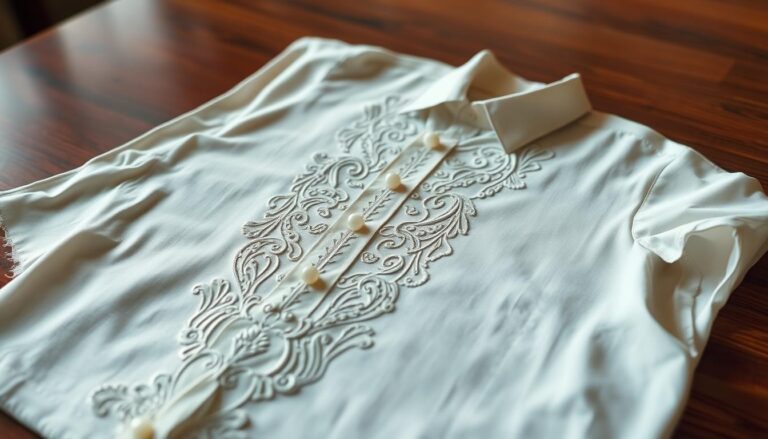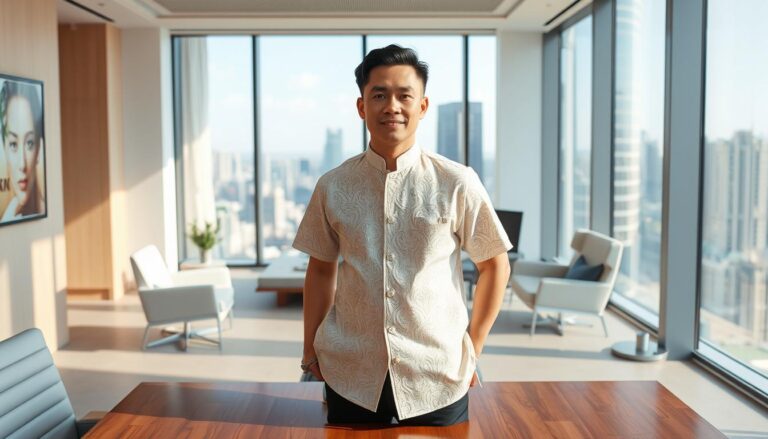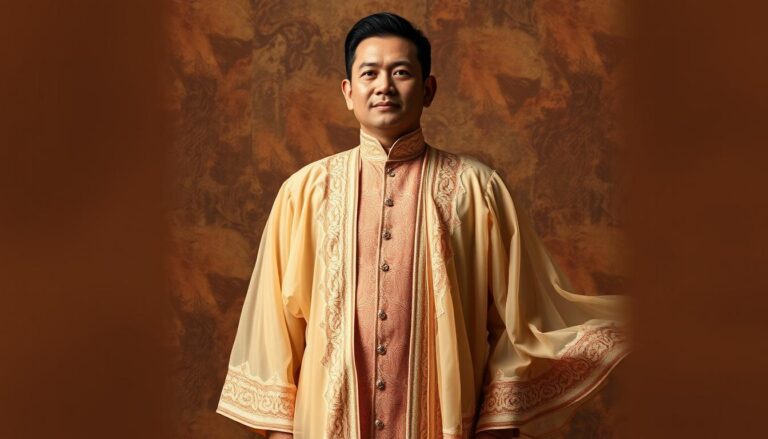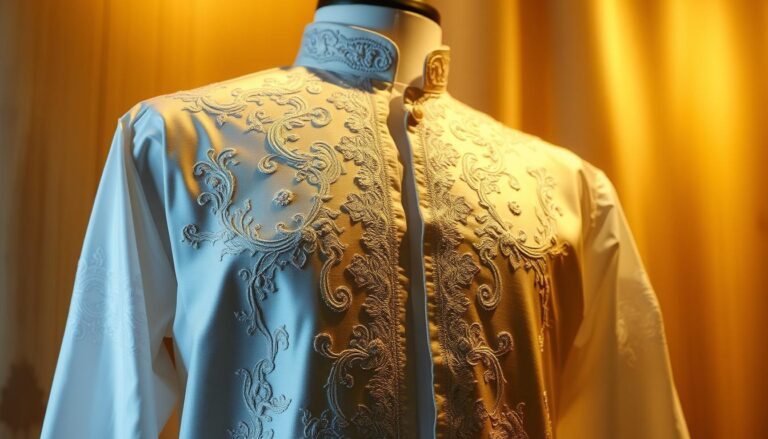Why Choose Barong Tagalog Over Traditional Suit Jackets
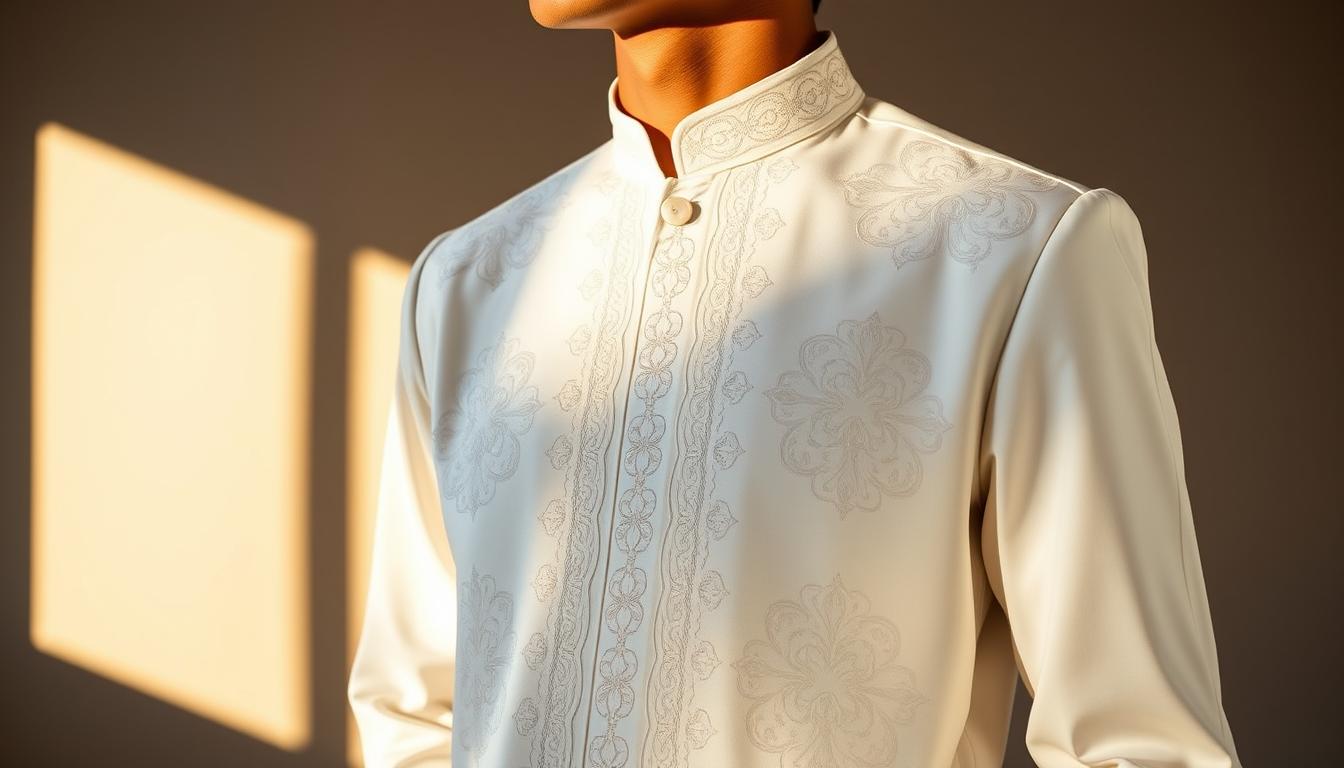
In a world of stiff collars and heavy wool suits, a breathable alternative combines heritage with modern sophistication. This garment’s sheer fabrics and meticulous craftsmanship offer a refreshing approach to formal dressing, particularly in warmer climates.
The traditional Filipino formal shirt stands out through its delicate embroidery and airy materials like piña-silk. These natural fibers create a luxurious drape while maintaining comfort – perfect for outdoor weddings or summer business events. Its semi-transparent design adds distinctive character without sacrificing professionalism.
Cultural significance elevates this attire beyond mere fashion. Worn by presidents and dignitaries, it carries centuries of artistry in every stitch. Modern designers now reinterpret classic patterns, blending ancestral techniques with contemporary silhouettes for versatile styling options.
Key Takeaways
- Lightweight fabrics like piña-silk provide superior comfort in warm weather
- Intricate embroidery showcases generations of artisanal skill
- Symbolizes cultural pride while maintaining formal elegance
- Adaptable for both traditional ceremonies and modern events
- Increasingly recognized in global fashion circles
From tropical celebrations to urban gatherings, this attire demonstrates how cultural heritage can enhance modern wardrobes. Its rising popularity reflects growing appreciation for meaningful, functional formalwear that tells a story.
Unique Qualities and Cultural Heritage
Long before modern formalwear dominated events, a garment rooted in Southeast Asian tradition redefined elegance. This iconic shirt carries stories of resilience, blending native craftsmanship with global influence to create a timeless symbol of identity.

Historical Significance and Origins
Early versions of this attire emerged from precolonial communities using woven pineapple fibers. Spanish colonial rule later transformed it into formal wear, requiring locals to keep the garment untucked as a status marker. This adaptation preserved indigenous artistry while absorbing European tailoring techniques.
Artistry in Embroidery and Materials
Master artisans spend weeks creating delicate patterns on piña (pineapple silk) or jusi (banana silk). These translucent fabrics showcase intricate floral motifs and geometric designs around collars and cuffs. Modern makers preserve these methods while experimenting with new options like metallic threads.
| Period | Materials | Embroidery Styles |
|---|---|---|
| Precolonial | Bark cloth | Tribal patterns |
| Spanish Era | Piña/Jusi | European florals |
| Modern | Hybrid fabrics | Fusion designs |
Influence from Spanish and Asian Traditions
The garment’s loose silhouette reflects tropical practicality, while detailed front panels show Hispanic influence. Chinese traders introduced silk threading techniques still used today. This cultural blend makes it a popular choice for diplomatic events and family celebrations alike.
In Filipino society, wearing this attire connects generations. From presidential inaugurations to beach weddings, people wear barong to honor heritage while embracing contemporary style.
Why Choose Barong Tagalog Over Traditional Suit Jackets
Formal attire evolves with cultural shifts, and one garment bridges heritage with modern practicality. Its lightweight construction and artistic details make it equally suitable for corporate boardrooms and beachfront ceremonies.

Versatility for Formal Occasions
This attire adapts seamlessly to diverse settings. Breathable fabrics like piña-silk blends keep wearers comfortable during outdoor weddings or all-day conferences. Unlike stiff suit jackets, the semi-sheer design allows airflow without compromising elegance.
Common occasions include:
| Event Type | Traditional Attire | Modern Advantage |
|---|---|---|
| Business Meetings | Wool Blazers | Wrinkle-resistant materials |
| Beach Weddings | Linen Suits | Superior drape & moisture control |
| Cultural Galas | Tuxedos | Hand-stitched embroidery |
Elegant Alternatives for Weddings and Business Events
Brides and grooms increasingly select this garment for tropical ceremonies. The delicate sheen of pineapple silk pairs beautifully with natural lighting, while modern blends offer stain resistance for receptions.
Corporate leaders appreciate its professional polish. A CEO in Manila notes: “It commands respect in negotiations while feeling a lot less restrictive than wool suits.” Premium materials maintain sharp lines throughout multi-hour events, from keynote speeches to networking dinners.
As a symbol of cultural pride, this attire elevates personal style while honoring craftsmanship refined through centuries. Its growing presence in global fashion weeks confirms its status as a timeless choice across climates and occasions.
Modern Appeal and Fashion Innovations
Traditional craftsmanship meets 21st-century demands as this iconic attire evolves. Designers now blend ancestral techniques with innovative approaches, creating pieces that resonate with global trends while honoring cultural roots.
Contemporary Materials and Customization
Modern iterations combine pineapple silk with polyester blends for enhanced durability. These hybrid fabrics maintain the garment’s signature drape while resisting wrinkles – ideal for destination weddings or back-to-back business meetings.
Customization options let wearers personalize collars and cuffs with minimalist geometric patterns. A Manila-based designer explains: “Clients request metallic thread accents or monogrammed embroidery that reflects their personality without overshadowing tradition.”
Integration into Today’s Fashion Trends
Global runways inspire local reinterpretations featuring tapered cuts and asymmetrical closures. Pairings with slim-fit trousers and leather shoes bridge heritage aesthetics with metropolitan clothing sensibilities.
Young professionals drive demand for office-ready versions in solid colors. Social media influencers showcase the garment with statement accessories, proving its versatility across society’s varied occasions. Through these innovations, the attire maintains relevance while carrying forward centuries of symbolic meaning.
Conclusion
In today’s global fashion landscape, garments that balance tradition with innovation stand apart. The iconic Filipino formal shirt exemplifies this harmony, merging ancestral artistry with contemporary relevance. Its lightweight fabrics adapt effortlessly to warm climates, while intricate patterns showcase generations of skilled craftsmanship.
From vibrant colors for beach weddings to minimalist designs for boardrooms, this attire offers versatile choices. Modern updates like stain-resistant blends and metallic thread accents ensure practicality without losing cultural importance. Designers blend ancestral techniques with materials suited for today’s fast-paced day.
More than clothing, it represents a living celebration of identity. Political leaders and grooms alike choose it for events demanding both elegance and meaning. As global runways embrace diverse styles, this garment remains a proud emblem of heritage, proving that true elegance thrives where culture and creativity intersect.

